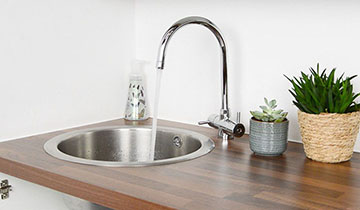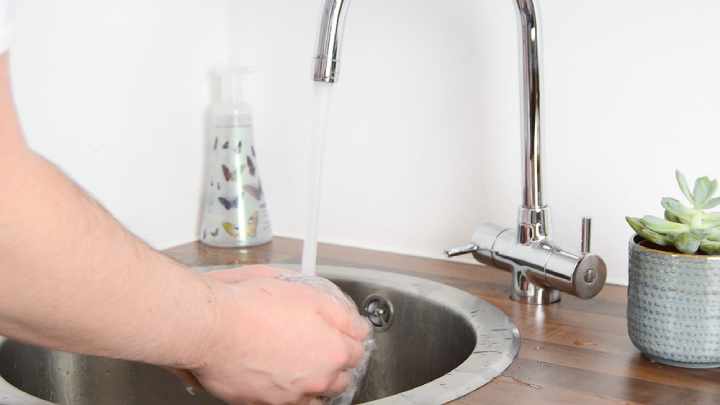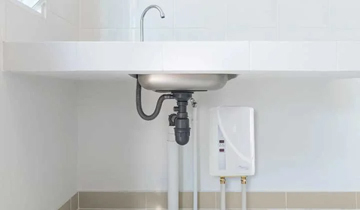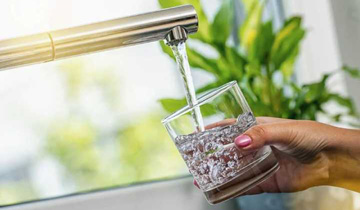3 min read
A NEW smarter water heating alternative - Product launch
How many times a day have you needed to run water, just waiting for it to get hot? It’s a massive waste! In fact, in the UK, we waste 65.5bn litres...

According to research by Water UK, the average person in the UK uses 142 litres of water a day. However, the same research also highlights that many UK homeowners believe that they use less than 20 litres per day. That’s a huge difference between what we think we use and the reality of what we actually consume.
When it comes to water waste, 3 billion litres of water is wasted and a large part of this is caused by leaks in pipes before the water has even entered your home. When the water does arrive in your home we continue to waste it. In fact, in the UK, we waste 65.5bn litres of water each year just waiting for the water to heat up in showers. That’s enough to fill a whopping 25,400 Olympic sized swimming pools!
Instant water heaters (instantaneous water heaters or point of use water heaters) are one of the ways in which homeowners can both reduce water waste as well as become more energy efficient when heating water. In this article, we’ll explain what they are, what options are available and if they are suitable for your project.
Instant water heaters (sometimes called tankless water heaters or point of use water heaters) deliver heated water instantly from the point of use such as a kitchen sink or bathroom shower. They have no standby energy losses which makes them energy-efficient, whereas a boiler with a water storage tank loses heat most of the time which means a lot of wasted energy…which you pay for.
Instant water heaters are always installed close to the outlet(s) so you won’t be waiting for hot water whilst you run off several metres of pipework full of cold water. A typical run of 10m of 15mm pipework contains over 3 litres of cold water which usually ends up down the drain before any hot water comes through which causes significant water waste. Not good or efficient!
Commonly you’ll find instant water heaters in smaller dwellings such as flats or outhouses (with a water supply). This is because instant water heaters are compact in size and eliminate the need for a bulky hot water cylinder taking up valuable space. In fact, instant water heaters can easily be installed in the smallest of spaces which makes them ideal for projects where space is at a premium.
All that is required to install an instantaneous water heater is access to the mains water and a suitably rated electricity supply. However, not all instant water heaters will be able to run on a typical household ring main and will need a dedicated electrical supply, a suitably sized cable to handle the load and a Residual Current Breaker with Over-Current (RCBO) to protect the circuit. A Part P qualified electrician can easily do this for you.
There are two main types of these types of water heaters. These are tank and tankless.
Point of use water heater (tank)
These just look like a much smaller version of a traditional tank water heater. They are compact in size which means they can be easily installed close to water outlets around the home such as under the kitchen sink. This type of point of use water heater heats a small amount of water and then stores it for the later use and tends to have a capacity of 2.5 to 7 gallons.
Point of use water heater (tankless)
The majority of tankless instant water heater delivers hot water by heating up the water via a heated element within the unit which means that as long as the water is running you can have an endless supply of hot water. However, not all instant hot water heaters use a heating element so we’ll be covering that further down the blog.
This type of under-sink water heater is also energy efficient because it’s not continuously working to keep the water hot but only working when it detects water flowing through it.
Most instant hot water heaters that are used at point of use contain a heating element within the unit. When a tap is turned on for hot water, hot water is called, water flows through the unit and the heating element rapidly heats the water flowing through. However, there is a major drawback with the way these water heaters operate. Because they use a high temperature heating element there is a greater risk of overheating, burnout or scaling of the element which will make the system ultimately fail and either the element or whole unit needing to be replaced.
Alternatives to a high temperature element
Instant water heaters such as ThermoSphere’s Micro Electric Boiler use a different type of technology to instantly heat water. Instead of using a high temperature heating element, the Micro Electric Boiler uses electrodes. This type of technology exploits the natural electrically conductive properties of water to heat it faster. As a result, it doesn’t suffer the same drawbacks as existing heating element technologies such as overheating, burnout and scaling.
Before going out and parting with your cash, you need to make sure that an electric instant water heater is right for your project. So, there are three key things you must consider:
These are:
Electrical supply
The first key point is to understand the electrical supply needed. Depending on which model you choose, you will need to have a dedicated supply circuit that is designed to work safely. This circuit should be connected at the distribution board (or consumer unit) by a suitably rated Mini Circuit Breaker (MCB).
Check list:
Flow rate
The flow rate is the amount of water that flows through an outlet, such as a tap or shower head, over a set time. With any instant water heater, the water flow rate affects the maximum temperature that you can heat your water to. Why? It’s because water that is moving faster needs to be heated quicker which requires more energy than heating slower moving water.
If you are looking to use an instant water heater you need to understand the flow rate in your home, or at least the typical UK averages. In the UK an acceptable flow rate is between 10 – 15 litres per minute. When you know your flow rate, you can select the right model for your project.
Check list:
Ambient water temperature
Most people in the UK assume the ambient temperature of water is around 5°C. But, according to the Energy Saving Trust, cold water in the UK averages at 10°C in winter and 20°C in summer.
An instant water heater boosts the temperature of the ambient water by a certain amount. If your ambient water temperature is lower than average, you may need a higher output unit and to slow down the flow rate of the water to achieve the hot water temperature you need.
This is why knowing the temperature of the water coming into your home is important. For more detailed information on this read ‘The 3 things you NEED to know before buying Micro Electric Boiler’ on our Heating Blog.
In a nutshell, yes they are. However, be mindful of the information you need to know before selecting one because it may be under specified which means you won’t get the results that you are expecting. If you are looking for longevity, source an instant water heater that doesn’t use the traditional high temperature heating element such as the Micro Electric Boiler.
If you do have any questions about anything covered in this blog, reach out to one of the ThermoSphere team who are always on hand to help.

3 min read
How many times a day have you needed to run water, just waiting for it to get hot? It’s a massive waste! In fact, in the UK, we waste 65.5bn litres...

8 min read
If you’re reading this, then the chances are you’re weighing up the pros and cons of buying a Micro Electric Boiler (MEB) for your home or project....

5 min read
Over the last couple of years awareness of the need to reduce carbon emissions has intensified. From the UK Government’s drive to ban gas boilers in...